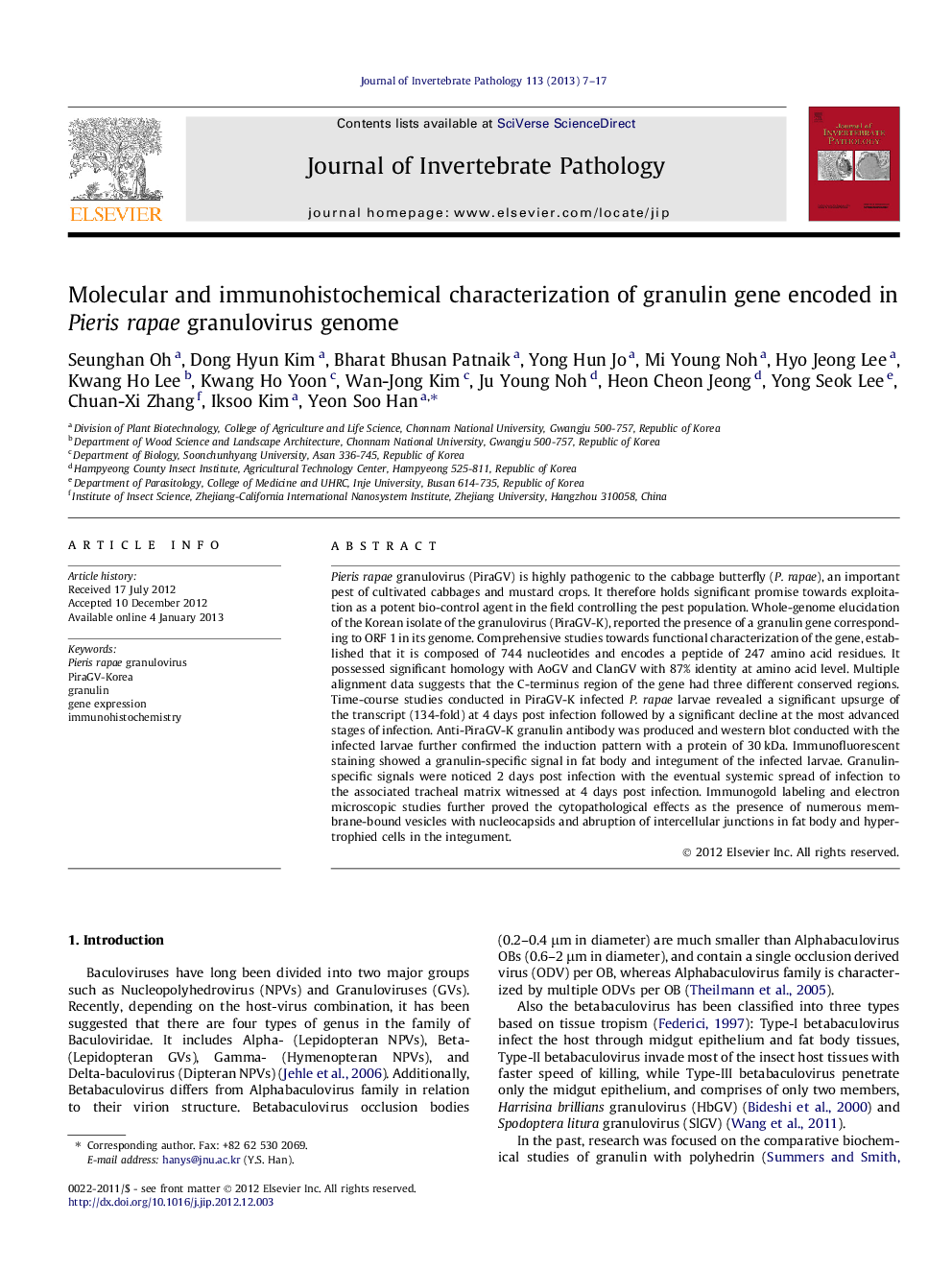| Article ID | Journal | Published Year | Pages | File Type |
|---|---|---|---|---|
| 4557827 | Journal of Invertebrate Pathology | 2013 | 11 Pages |
Pieris rapae granulovirus (PiraGV) is highly pathogenic to the cabbage butterfly (P. rapae), an important pest of cultivated cabbages and mustard crops. It therefore holds significant promise towards exploitation as a potent bio-control agent in the field controlling the pest population. Whole-genome elucidation of the Korean isolate of the granulovirus (PiraGV-K), reported the presence of a granulin gene corresponding to ORF 1 in its genome. Comprehensive studies towards functional characterization of the gene, established that it is composed of 744 nucleotides and encodes a peptide of 247 amino acid residues. It possessed significant homology with AoGV and ClanGV with 87% identity at amino acid level. Multiple alignment data suggests that the C-terminus region of the gene had three different conserved regions. Time-course studies conducted in PiraGV-K infected P. rapae larvae revealed a significant upsurge of the transcript (134-fold) at 4 days post infection followed by a significant decline at the most advanced stages of infection. Anti-PiraGV-K granulin antibody was produced and western blot conducted with the infected larvae further confirmed the induction pattern with a protein of 30 kDa. Immunofluorescent staining showed a granulin-specific signal in fat body and integument of the infected larvae. Granulin-specific signals were noticed 2 days post infection with the eventual systemic spread of infection to the associated tracheal matrix witnessed at 4 days post infection. Immunogold labeling and electron microscopic studies further proved the cytopathological effects as the presence of numerous membrane-bound vesicles with nucleocapsids and abruption of intercellular junctions in fat body and hypertrophied cells in the integument.
Graphical abstractFigure optionsDownload full-size imageDownload as PowerPoint slideHighlights► PiraGV-K granulin gene has 744 nucleotides encoding a 247-amino acid peptide. ► Lack of nuclear localization signal relates to its lysis during PiraGV replication. ► Expression of transcript at 4 days suggests late baculoviral gene action. ► Polyorganotropic infection with early localization in fat body and integuments.
